Improving the Camel
Scientists are breeding camels that are stronger, faster, and able to go longer on less water.
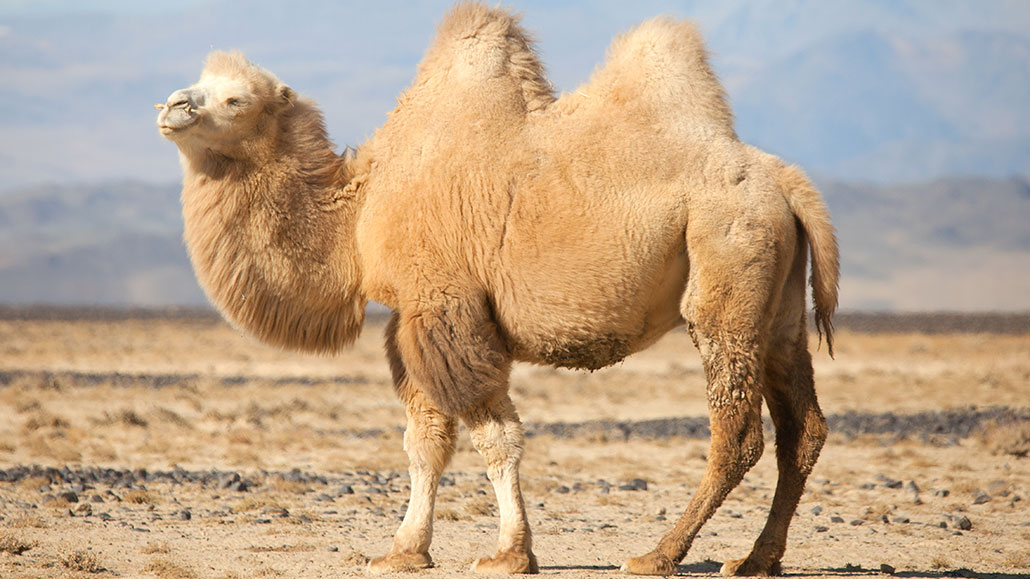
Although no wild camels remain in India, the country boasts more than a million of these animals. It also has a research center devoted to them.
afhunta/iStockphoto/Getty Imagesvv
By Emily Sohn
Bikaner, India.
The camel I was sitting on seemed calm enough.
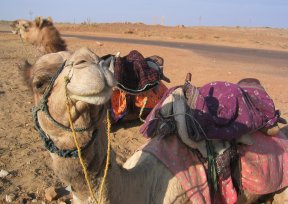
When I signed up for a 2-day camel trek during my recent trip to India, I was worried that the camel would spit at me, throw me off its back, or run full speed into the desert as I clutched its neck for dear life.
I had no idea that such a big, lumpy creature was the product of many years of scientific research, breeding, and training. There are about 19 million camels in the world. Sometimes known as “ships of the desert,” they can carry heavy loads and survive where most other animals cannot.
I also learned later that there are no wild camels left in India. The wild Bactrian camel, perhaps the ancestor of all domestic camels, survives in just China and Mongolia and is highly endangered. Learning more about camels might help preserve these rare animals.
Desert trek
After the first hour or two on the back of a mellow camel named Muria, I started to relax. I sat on soft blankets on his hump, 8 feet off the ground. We clomped slowly from sand dune to sand dune through the Indian desert, about 50 miles from the India-Pakistan border. Occasionally, the lanky creature leaned over to chomp off a branch from a scrubby plant. I held his reins, but Muria didn’t need much guidance. He knew the terrain well.
Suddenly, I heard a deep, gurgling noise that sounded like a broken toilet overflowing. GURGLE-URRRP-BLAAH-GURGLE. Trouble was surely brewing. The sounds were so loud, I could actually feel them. That’s when I realized that the belching sounds were coming from the camel underneath me!
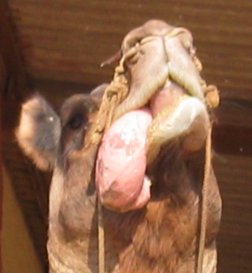
As he grumbled, Muria arched his neck and stuck his nose into the air. Out of his throat came a large, inflated, pink, tonguelike bladder. He stomped his front feet on the ground.
Soon, the camel was back to normal. I, on the other hand, was petrified. I was sure he was sick of carrying tourists around and was ready to throw me off and stomp me to pieces.
It wasn’t until a few days later, when I visited the National Research Centre on Camel in a nearby city called Bikaner, that I got a better explanation. Winter is camel-mating season, I learned. And Muria had just one thing on his mind.
“When a camel is mating, he forgets food and water,” explained Mehram Rebari, a 26-year-old tour guide at the center. “He wants only females.”
Gurgling is a mating call. The pink protrusion is an organ called the dulla. Sticking it out and foot stomping are two ways in which males show off. Muria must have seen or smelled a female camel and was trying to impress her.
Important uses
Mating rituals aren’t the only thing I learned about at the camel research center. Among other projects, scientists are working to breed camels that are stronger, faster, able to go longer on less water, and more resistant to common camel diseases.
Camel research has the potential to change people’s lives. More than 1.5 million camels live in India, Rebari told me, and people use them for practically anything you can imagine. Their wool makes good clothes and carpets. Their skins are used for purses, their bones for carvings and sculptures. Camel milk is nutritious. The dung works well as fuel.
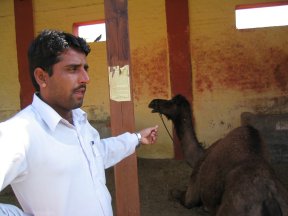
In the state of Rajasthan, where I traveled for 3 weeks, I saw camels pulling carts and carrying people through the streets of even the biggest cities. Camels help farmers plow fields, and soldiers use them to transport heavy loads across dusty deserts.
Camels are especially useful in dry places because they can survive long stretches without water: 12 to 15 days in winter, 6 to 8 days in summer. They store fat and energy in their humps, and they regurgitate food from their three stomachs to make it last longer.
Camels are extremely strong animals. They can drag loads that weigh more than they themselves do, and some adult camels weigh more than 1,600 pounds.
Breeding camels
Scientists at the camel research center do basic studies to determine the strengths and weaknesses of different types of camels. The 300 camels that live at the center belong to three breeds: Jaisalmeri, Bikaneri, and Kachchhi.
Studies have shown that the Bikaneri breed has the best hair and skin, perfect for making carpets and sweaters. Bikaneri camels are also the strongest. They can haul more than 2 tons of cargo, 8 hours a day.
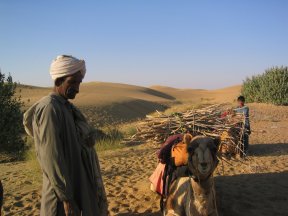
Jaisalmeri camels are fastest, Rebari said. They are light and lean, and they can run faster than 12 miles an hour. They also have the most endurance.
The Kachchhi breed is known for its milk production: A typical female can give more than 4 liters of milk a day.
As part of one project at the center, scientists are crossbreeding camels to combine the best qualities of each type. They are also working to breed camels that are more resistant to diseases. Camelpox, foot-and-mouth disease, rabies, and a skin disease called mange are some common ailments that plague the animals. Some of these can kill the camels; others are expensive and inconvenient to treat.
Good milk
Camel milk has been used to treat tuberculosis, diabetes, and other illnesses in people. Unfortunately, Rebari said, camel milk only lasts for about 8 hours outside a camel before going bad.
Even when it’s fresh, he said, it doesn’t taste great. “Ugh,” he sneered, when I asked if I could try some. “It has a salty taste.”
Researchers are looking for improved methods of preserving camel’s milk, and they are developing ways to process the milk into cheese. Maybe someday camel’s milk will be available as a medicine. The day that your local fast-food restaurant sells a camel milkshake, however, is probably a long way off.
As for me, my camel experiences in India made me much less afraid of these animals and more appreciative of how amazing they are.
Imagine what it would be like if you could survive for weeks without water while trudging through the desert with thousands of pounds on your back. It might not be very pleasant, but your friends would be impressed.
I learned another important lesson, too. Even though the gurgling noise of a broken toilet grosses me out, not everybody feels the same way. If you’re a lady camel during mating season, in fact, there may be few sounds so sweet.
Going Deeper:
News Detective: Emily Rides a Camel
Word Find: Improving the Camel







